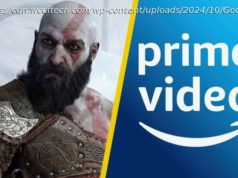Is the Apple TV worth it? What about an Amazon Fire TV? Should you just stick with a Roku? Here’s what we think.
At this point, streaming video players are nothing new – they’ve been on our media shelves for over a decade at this point. With that perspective in mind and ample testing time under our belts, we thought now would be the best time to run through some quick pros and cons of each streaming video platform.
The goal here is to help you understand which of the streaming video players is the best for your setup, taking into consideration ease-of-use, content catalogue size and overall performance of each of the players.
By the end of the slideshow, you should be able to pick out which of the players makes sense for you and your family, as well as some information on some of the other players that you might need down the road.
Let’s get this streaming party started!
When looking for a brand-new streaming video player it’s important to find one that’s easy to setup – especially if you’re buying it for someone who might not know their way around technology like you do.
That being said, all four of the major streaming video players are pretty easy to setup. Chromecast and Roku require you to connect the players to the web using a code that appears on your screen, while Apple and Amazon can connect to the internet without requiring you to go to a website to register them first.
While all four major players differ in the variety of ports offered along their backside, there’s one common thread among all of them: the HDMI cable. What does that mean for you? Well, any TV you want to hook up to one of these players will require an HDMI port (except in the case of the Roku Express which can use standard composite RWY cables) . You should also have a relatively fast internet connection (greater than 15mbps) if you plan on streaming 4K videos.
Setup is one thing, but actually using the device on a day-to-day basis is another.
After using the interfaces for a number of years, we have to say, Roku probably has the best, most-intuitive interface. Why? Everything is easy to find and relatively straight forward. There’s a spot for everything in the home channel, and while Roku doesn’t have the most interesting app selection in the world (we’ll cover that in a second) , it’s not hard to find something to watch.
Similarly, Amazon Fire TV has a pretty straight forward interface as well – however, it largely depends on you subscribing to Amazon Prime to function. If you’re a Prime subscriber, you’ll find recommended films and shows readily, with additional for-purchase options listed further on the home screen. It’s easy to parse which content is part of Prime and which content is not, and we liked that Amazon’s Fire TV Store includes games as well.
Well if there’s one thing that’s changed with the new Apple TV it’s the interface (it sure isn’t its physical appearance which is still a boring black box) . It runs a brand new operating system called tvOS, which is clearly based on iOS 9 but with some Mac OS elements thrown in. While the old Apple TV rather enthusiastically offered you iTunes-based content above all others, tvOS actually integrates all your other apps in a more helpful way. It has games, productivity apps, music and video streaming apps from a number of high-profile developers, offering a great selection of content while still keeping everything organized and easy to find.
All of these options are clearly a lightyears ahead of Chromecast, which doesn’t actually have a GUI as it’s designed so you can simply ‘throw’ content at your TV from your phone or tablet. It’s simple to throw content from any device on your Wi-Fi network, but it’s not always the simplest thing to explain to people coming over and interacting with a Chromecast for the first time.
So which one offers the most content? Well … the answer is a bit murky, unfortunately, and it largely depends on which ecosystem you’re tied into.
The good news is that all four major players support Netflix and YouTube, the two staples of streaming video. Three of the four (Roku, Apple TV and Fire TV) also support native Amazon Prime Video apps as well – which is great for anyone interested in streaming award-winning hits like Catastrophe and Transparent off Amazon’s video service.
At least you can rest assured knowing that whichever box you buy, you can watch most of your favorite shows.
So what are the differences?
Well, on Apple TV you have the ability to watch anything from an iOS device thanks to AirPlay – a technology that takes whatever you’re seeing on your screen and sends it to your TV. That includes photos, music and more, and it’s pretty convenient if you’re big on Apple devices.
For Android fans, you’ve got a system called Google Cast that works much in the same way for the Chromecast and Chromecast Ultra. Pick out what you’d like to see on big screen, and press the Cast button to send it to the TV.
So what do Roku and Amazon bring to the table? A little thing called universal search that helps you track down the best places to stream shows and movies. Search « Guardians of the Galaxy » on either device, and you’ll see a list of every streaming service offering the film, along with a price for each. This is really handy if you’re a thrifty spender and you don’t care where content comes from.
4K and HDR have become two big buzzwords in televisions over the last few years. 4K, also known as Ultra HD, refers to the amount of pixels a device can process and display, while High Dynamic Range (HDR) refers to the quality of each of the pixels in terms of color depth and contrast.
Ready for more good news? Three of the four players offer 4K streaming – Chromecast Ultra, Roku Premiere+ and Roku Ultra plus the Amazon Fire TV – while Chromecast and Roku offer HDR streaming.
That being said, Roku is the only streaming device that makes finding this content a cinch by providing a dedicated area on its interface for 4K content.
This is where things start to get a bit more complicated.
In our opinion, none of these players replace a traditional game console (though the Nvidia Shield gets pretty close) .
Of the four we’ve explored so for, Apple TV was built with apps and gaming at its heart and probably offers the biggest diversity on the matter. Roku has a few titles on its store, but the offering isn’t great. It’s a similar story for Amazon Fire TV and Chromecast, the latter of which requires you to download games from either the Apple App Store or Google Play Store and then Cast them to your TV.
What’s a streaming box without a remote? (Answer: it’s a paperweight.)
Obviously a remote is a relatively important tool, and while it probably won’t be a deal-breaker to have a less-than-ideal control pad, it’s worth exploring which one of the four devices has the best one.






